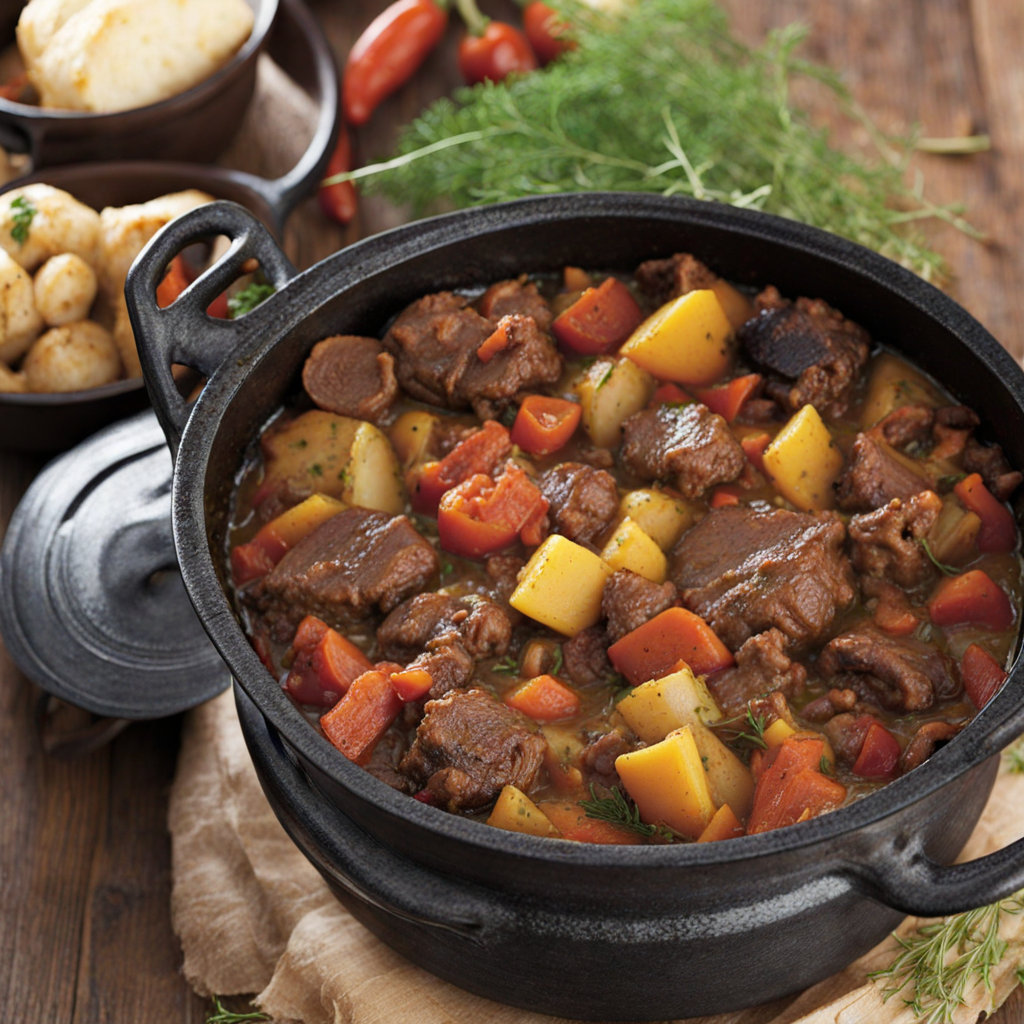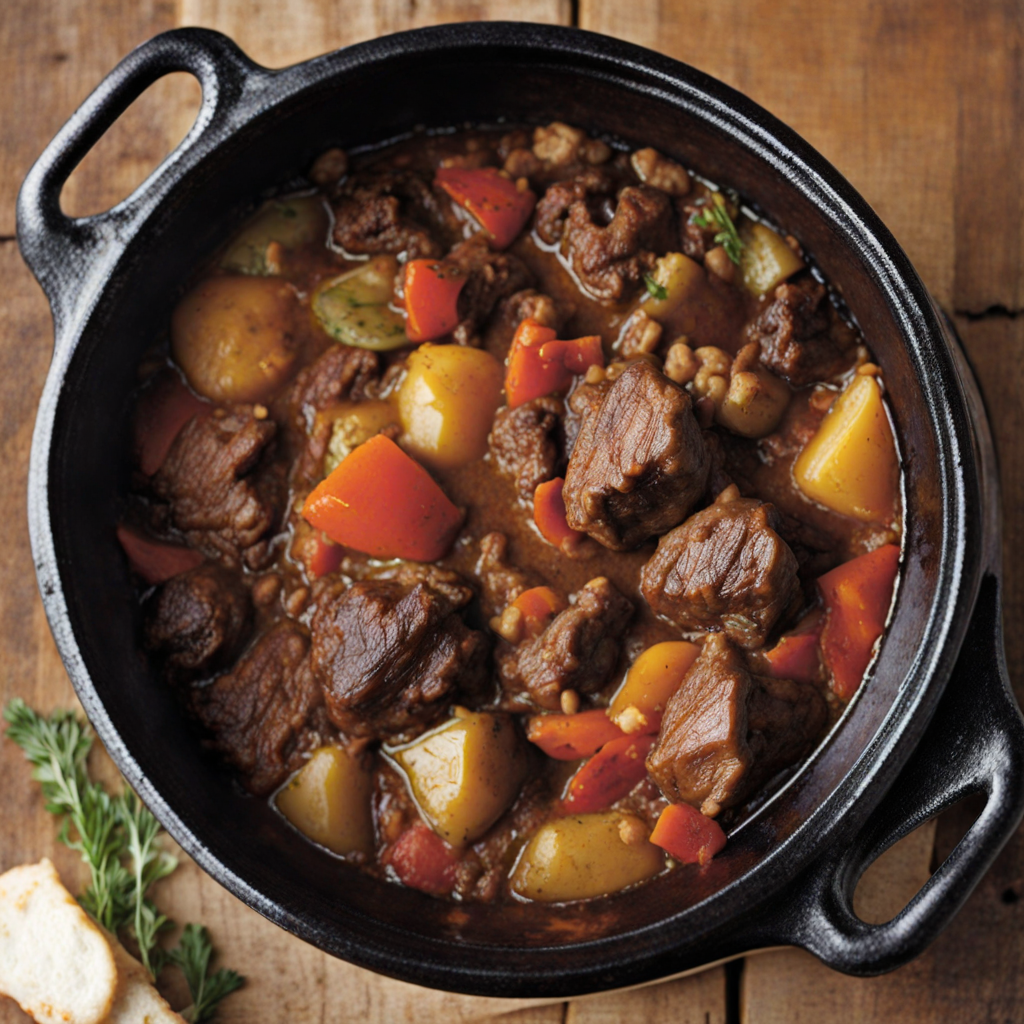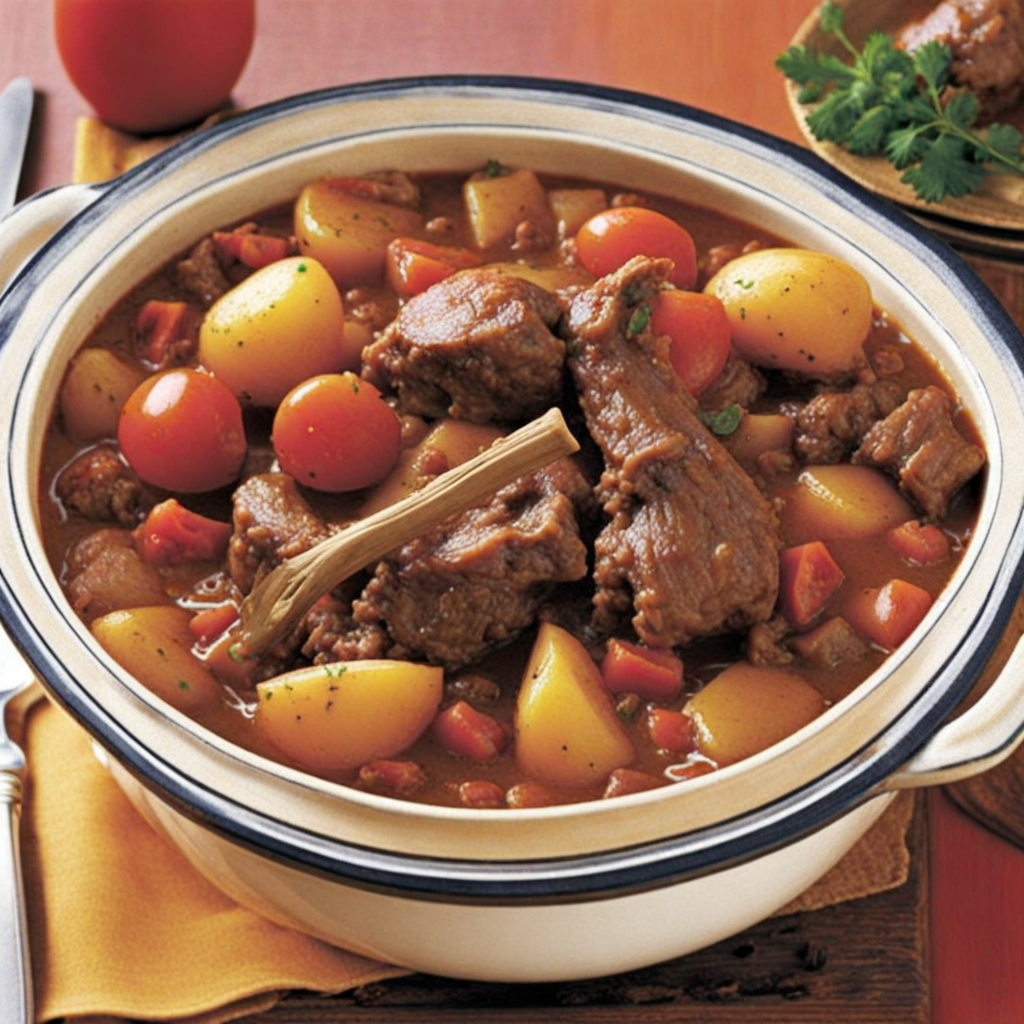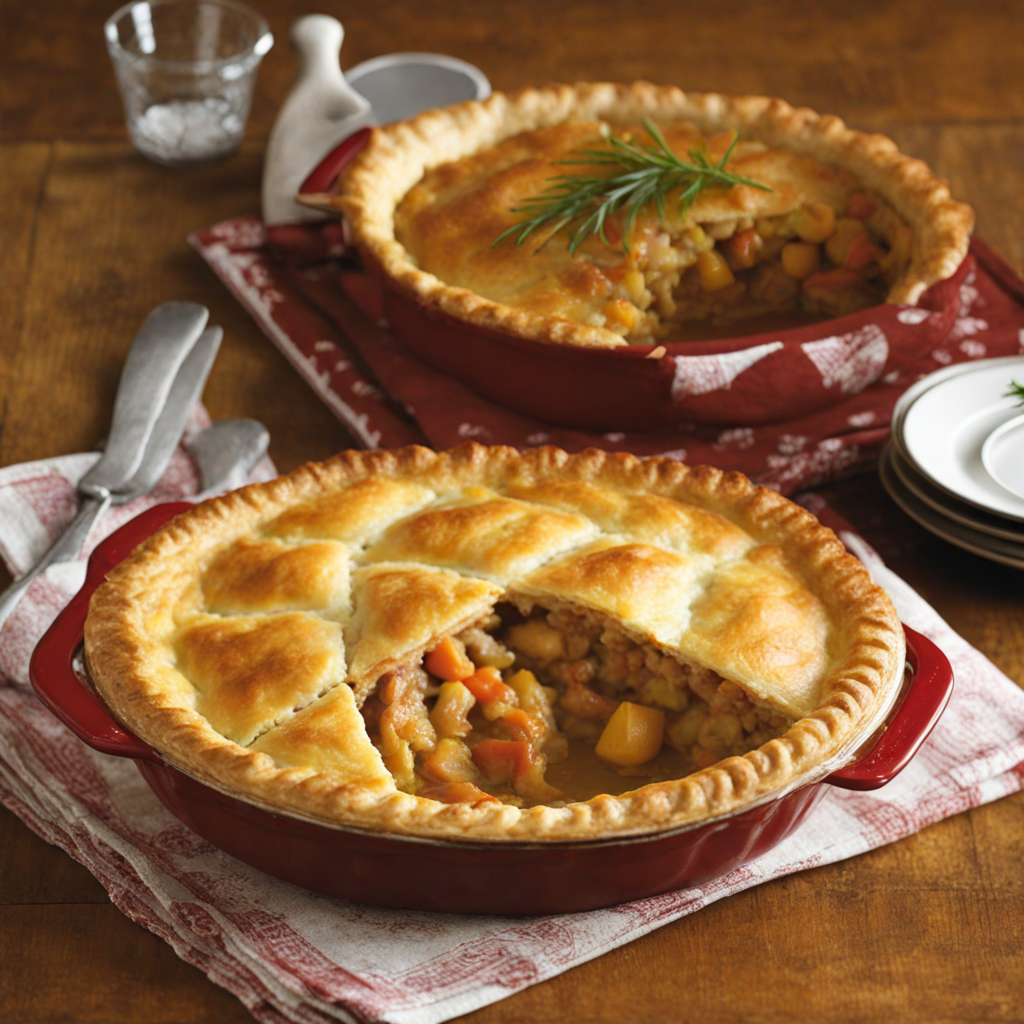Potjiekos
Potjiekos is a traditional South African dish that embodies the essence of hearty, communal cooking. The name translates to "small pot food," reflecting the method of preparation in a cast-iron pot, or potjie, which is placed over an open fire. This slow-cooked stew typically combines a medley of ingredients such as tender meats—often lamb, beef, or chicken—with a variety of vegetables like potatoes, carrots, and onions. The flavors meld beautifully over several hours, allowing the ingredients to infuse one another, creating a rich and savory taste that is both comforting and satisfying. What makes Potjiekos particularly unique is its versatility and the freedom it offers for personalization. Cooks often add their own twist by incorporating local herbs, spices, and even fruits like apricots or raisins to enhance the dish's complexity. The layering technique used in cooking not only helps to retain the individual flavors of each ingredient but also results in a wonderfully aromatic dish that captivates the senses. It is common to serve Potjiekos with traditional sides like rice, bread, or pap, which help to soak up the delicious sauce created during the cooking process. Eating Potjiekos is more than just a meal; it is a social experience. It is often prepared during gatherings, celebrations, or family get-togethers, where friends and loved ones come together to share in the enjoyment of this flavorful dish. The communal aspect of Potjiekos, along with its ability to feed a crowd, makes it a staple in South African cuisine. Whether enjoyed outdoors by a fire or at a festive table, Potjiekos offers a warm, hearty taste of South Africa that leaves a lasting impression.
How It Became This Dish
Potjiekos: A Stew Steeped in History and Culture Potjiekos, a beloved South African dish, is more than just a meal; it embodies the spirit of community, tradition, and the rich tapestry of cultural influences that have shaped the nation. Originating from the Afrikaans word "potjie," meaning "small pot," and "kos," meaning "food," potjiekos is a slow-cooked stew traditionally prepared in a cast-iron pot over an open flame or hot coals. The dish has a fascinating history that weaves through the diverse cultures of South Africa, reflecting its complex past. Origins and Early Influences The roots of potjiekos can be traced back to the early European settlers, particularly the Dutch, who arrived at the Cape of Good Hope in the 17th century. These settlers, known as the Afrikaners, brought with them culinary traditions from the Netherlands, which included the use of iron pots for cooking. As they adapted to their new environment, they began incorporating local ingredients and cooking methods influenced by the indigenous Khoisan people and later, the Xhosa and Zulu cultures. The Khoisan, the first inhabitants of the region, were skilled hunters and gatherers, using the natural resources around them. They often cooked meat and vegetables in simple ways, utilizing the heat from the flames. This communal style of cooking resonated with the Afrikaners, who embraced the notion of preparing food together as a family or community. The Cultural Significance of Potjiekos Potjiekos is more than just a dish; it is a symbol of togetherness and celebration in South African culture. Traditionally, potjiekos is prepared outdoors, often during family gatherings, festivals, or special occasions. The act of cooking potjiekos is a communal experience, where family and friends gather around the fire, sharing stories, laughter, and companionship. The preparation of potjiekos is an art in itself. It involves layering ingredients in the pot, starting with the meat, followed by vegetables, and finally spices and broth. The slow cooking process allows the flavors to meld beautifully, creating a hearty and robust dish. Each potjiekos recipe is unique, reflecting the cook’s creativity and the local ingredients available, which can vary based on the season. This variety has led to many regional interpretations, resulting in a vibrant tapestry of potjiekos recipes across South Africa. The Evolution of Potjiekos As South Africa evolved, so did potjiekos. The dish adapted and absorbed influences from the diverse cultures that inhabit the region. The arrival of Indian and Malay slaves in the 17th and 18th centuries introduced spices, such as curry and chili, which began to find their way into potjiekos recipes. This melding of flavors contributed to the creation of unique variations that celebrated the multicultural fabric of South African society. In the 20th century, potjiekos gained popularity beyond its rural roots and became a staple at urban gatherings and celebrations. Its reputation as a comfort food grew, and it was often served at picnics, braais (barbecues), and community events. The potjiekos competition emerged during this time, where cooks showcased their skills and creativity, further entrenching the dish in South African culinary culture. Variations and Regional Differences Today, potjiekos can vary significantly from one region to another, reflecting the local ingredients and culinary traditions. In the Western Cape, for instance, you might find a seafood potjiekos, featuring fresh fish, mussels, and calamari, often seasoned with herbs like parsley and lemon. In contrast, the Northern Cape might favor a game potjiekos, using venison or other wild meats, complemented by local vegetables. Some cooks prefer a more traditional approach, using only meat and vegetables, while others experiment with ingredients like lentils, beans, or even pasta. The choice of meat can range from beef and lamb to chicken and even ostrich, showcasing the versatility of this dish. The spices used also reflect the diversity of South African cuisine, with some opting for a mild flavor profile, while others embrace the heat of chili peppers. Potjiekos Today In contemporary South Africa, potjiekos remains a cherished dish, embodying the nation’s spirit of unity and diversity. It is often featured at social events, community gatherings, and family celebrations, serving as a reminder of the importance of sharing meals and experiences with loved ones. The dish not only nourishes the body but also fosters connections and strengthens bonds among friends and family. The rise of social media and food tourism has also contributed to the resurgence of potjiekos. Food enthusiasts and travelers are eager to experience authentic South African cuisine, and potjiekos has become a highlight for those exploring the country’s culinary landscape. From street food stalls to fine dining restaurants, potjiekos is celebrated for its rich flavors and cultural significance. Conclusion Potjiekos is more than just a dish; it is a cultural icon that encapsulates the history, traditions, and diversity of South Africa. From its early beginnings with the Afrikaans settlers to its evolution influenced by various cultures, potjiekos has become a symbol of community and togetherness. Whether enjoyed in a rustic outdoor setting or at a modern gathering, potjiekos continues to bring people together, reminding us of the power of food as a means of connection and celebration. In every pot of potjiekos simmering over the fire, there lies not just a meal, but a rich history of a nation.
You may like
Discover local flavors from South Africa







